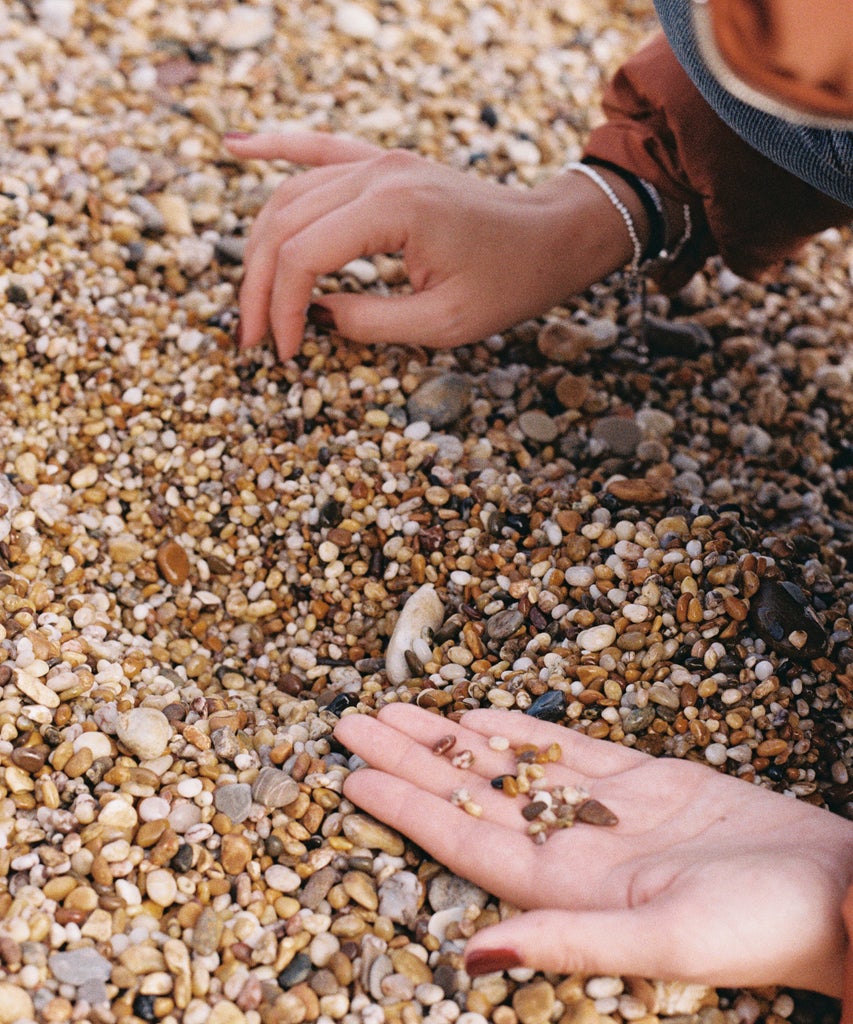
In significant life events, joy is supposed to be easy to find. Things like marriages and children and graduations and job promotions are the times when we expect to feel happiness and contentment with our lives — and we often do. But what about the inbetweens, the smaller moments? And we’re not just talking about concerts, sunsets, parties, trips — we’re talking about even smaller moments, the ones that might just pass you by if you’re not looking close enough. Those moments? They’re called glimmers.
Branded as the opposite of triggers, Deb Dana, LCSW, psychotherapist and author, coined the term glimmers, and says that they’re tiny micro-moments of joy that allow us to feel calm and give us a sense of inner peace. While the word glimmer — defined as a faint or wavering light — insinuates that these small bits of joy are hard to find, blink-and-you’ll-miss-them kind of moments, in reality, glimmers are all around us. They’re your favourite song being played in the grocery store and a flower growing out of a crack in the sidewalk. And, while brief, these small fleeting moments can fuse together to create something substantial enough for us to run with.
On the surface glimmers may sound trivial, but they’re crucial to calming down our central nervous system, according to Dana. Her work is focused through the lens of polyvagal theory, which argues the nervous system has a significant effect on our mental health. “Our nervous system is where all of our experience begins, it’s where our thoughts, feelings, behaviours, body responses — everything — starts, and glimmers emerge from the nervous system state of what’s called ventral,” Dana explains. “It’s a state of regulation, safety, and connection. Polyvagal theory really helps us understand that we have three states that we are moving in and out of all the time: We have that state of ventral safety connection regulation, we have the sympathetic state of fight and flight, and then we have a dorsal state of disconnect, collapse, shut down.”
Mariel Buquè, PhD, a trauma therapist, agrees, and says while glimmers can ease our minds in the moment, they also can help us develop a less overactive nervous system in the long-term, “while also helping us to develop neural connections that are programmed for ease and rest,” she says. “Our brains are flexible, malleable, and neuroplastic, and our nervous systems can be reprogrammed. Glimmers can help us make small changes in both.”
Paying attention to glimmers helps us come to terms with the fact that joy and pain can coexist in life. “Oftentimes we default to ‘all-or-nothing’ thinking,” says Liz Kelly, LICSW, psychotherapist and author of upcoming novel This Book Is Cheaper Than Therapy: A No-Nonsense Guide to Improving Your Mental Health. “In other words, we might think our day as all good or all bad depending on a single event, but that is rarely the case. Life is typically a mix of ups and downs, and we can become more resilient by searching for the glimmers when we feel down.”
Even though glimmers are small moments, they have the capacity to come together to reframe the way we move through our lives to be more positive. “As each one of us finds a glimmer, the glimmer moments begin to accumulate in our system,” Dana continues. “We begin to see more, and we begin to have more capacity to be in that place of regulation. And from that place of regulation, you then can show up for others in a different way. It’s almost as if this micro-moment — this glimmer — is the beginning of what can become a really big change.”
The first thing you need to do before you can start noticing these micro-moments of joy is knowing what they are, so you’re already a step ahead of the game. Dana says that glimmers are both predictable and unpredictable, meaning that while they can catch you at any moment, there are specific places you can put yourself where you know you’ll catch one. For example, if you’re at the beach, you might feel a glimmer as you stumble across a sand dollar or hear the sound of an ice cream truck nearby. Understanding that glimmers are simultaneously surprising and expected is key to experiencing them, according to Dana.
And they’re not all the same. Your glimmers, for example, may be completely different than my glimmers. I feel them when a dog lifts its nose up to sniff me as it walks by or when I see a small child on an even smaller scooter. You, on the other hand, might have an aversion to both kids and dogs — which is totally fine, we all have our thing — so you may find your glimmers arriving in the form of a still silence in the park or when the person next to you at a restaurant treats their server with kindness. There’s no right or wrong when it comes to glimmers, so ask yourself, what’s a glimmer for you?
If you’re having trouble finding glimmers yourself, Dana says to remember that glimmers are all around us. They’re the clouds shaped like hearts, they’re the sidewalk chalk that someone left behind, they’re the last cookie in the cookie jar. Be aware, be patient, and better yet, be open. “If we can just be open to the experience of seeing one, finding one, feeling one — whatever it’s going to be — they will appear,” she says. “Your body is built with the capacity to find glimmers. It just is.”
While we’re more aware of our joy during the big moments, it’s also up to us to look to the small moments for signs of happiness — you might be surprised at what you find.
Like what you see? How about some more R29 goodness, right here?
The Joy Of Focusing On Nothing As A Single Person